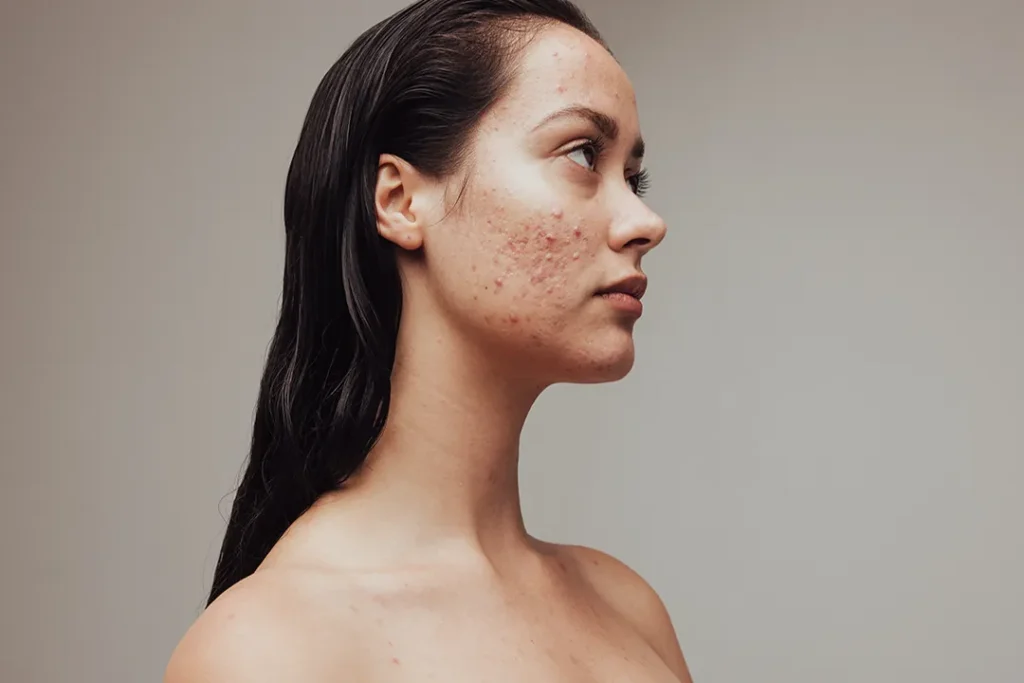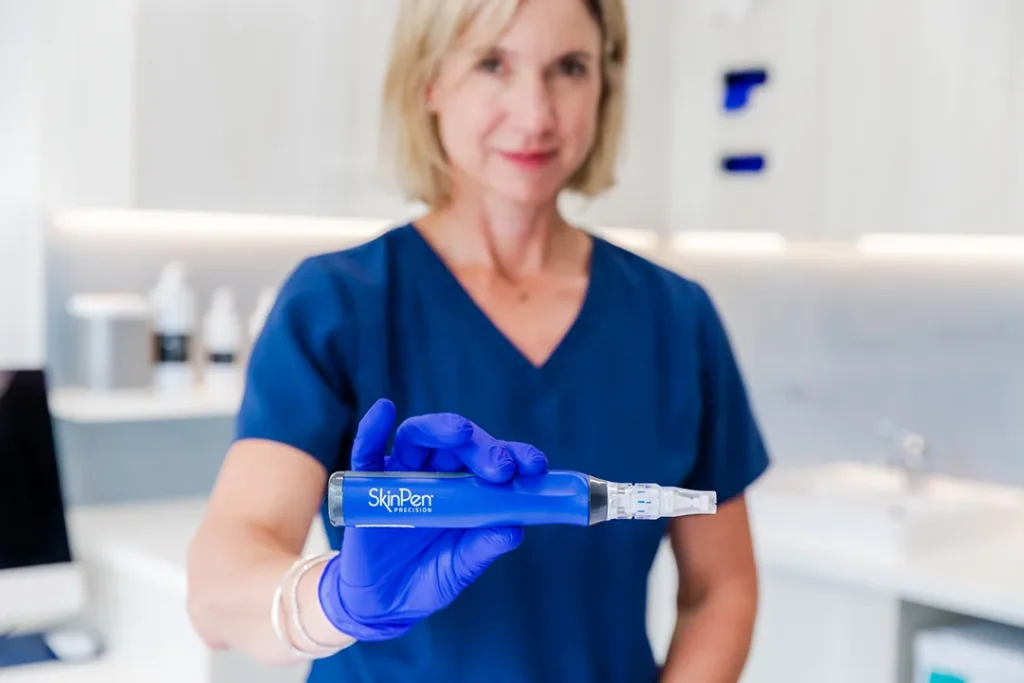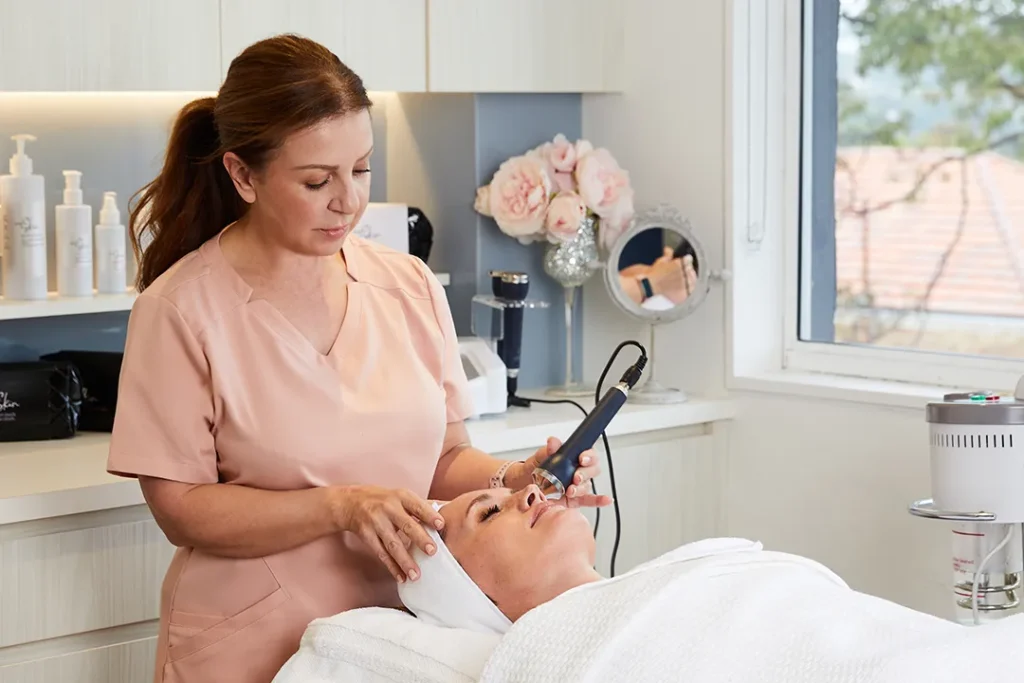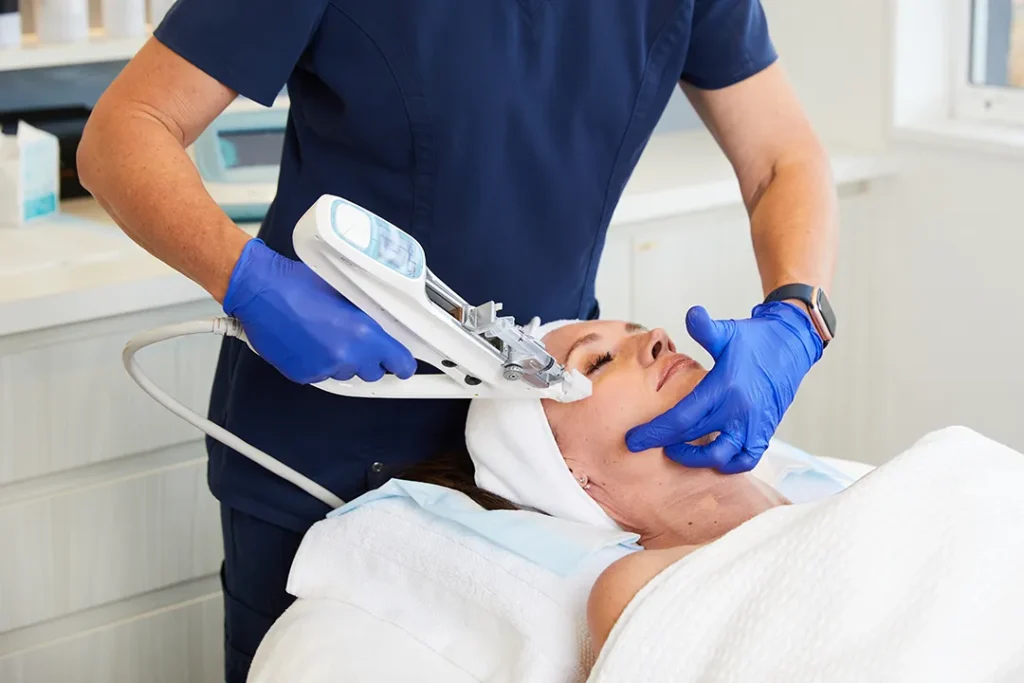The first step in identifying the best cosmetic injectable for you is understanding your wrinkles. There are other considerations to think about, too, of course. No longer is the use of injectables restricted to doctors specially trained in cosmetic medicine. These treatments are offered on just about every street corner at medispas, beauty clinics, at GP’s offices and even dental offices.
What does that mean for you and your well being? With Dr Austin’s help, we’re going to hopefully allay some of the fears you may have over the safety of these drugs.
Wrinkle Identification Kit
The lines that form when you are making an expression, but disappear when you are not are called dynamic lines. These are the lines most often treated with muscle relaxants.
“By relaxing muscles that cause facial lines, we can reduce or remove the wrinkles entirely depending on your desired result,” says Dr Austin. “This can help soften the appearance of ageing.
The lines that exist when you are not making an expression are called stationary or static wrinkles. These are the lines most commonly treated with dermal fillers. These are the lines that are often genetic and usually become more prominent as we age. “Now this is not an absolute, but it should give you a rough guide,” says Dr Austin.
“The easiest way to work out whether you are likely to need muscle relaxants or dermal fillers is to have a look at yourself in the mirror,” says Dr Austin. “Then go to a medical professional for a consult.” At home:
- Look at yourself without smiling or producing any type of expression
- Look again when you smile, frown or pout
- Take care to notice which lines are apparent before you make an expression and which lines come on when you do
Control Facial Lines & Reduce Signs of Ageing
“Muscle relaxants are an effective way of controlling facial lines and an excellent way to reduce the signs of ageing,” says Dr Austin. “Essentially they are all very similar, akin to brand name or generic name medications you would get at the pharmacy.” They all have the same essential makeup but are made by different companies. There are those who have their preferences.
The “Big B” is available in three forms in Australia. They are all derived from Type A Toxin. This is a purified protein derived from a bacterium. It is used in minute quantities to temporarily relax the muscles, leaving you looking fabulous and wrinkle free! The effects of this popular injectable will last for 3-4 months, but the toxin is out of your body in 24 hours.
Experience is the Best Defence
If you’ve been holding your breath about anti-wrinkles injections, it’s time to exhale and relax. You’re safe in the hands of experienced and well-trained professional like Dr Austin because she has:
- Experience with Facial Anatomy – “The best providers have an intimate knowledge of facial anatomy to know exactly where to inject to give you the result you desire,” says Dr Austin.
- Experience with Facial Muscle Strength – “If you look at 5 different people and asked them all to smile, frown, pout, etc. you will notice that they all use their facial muscles slightly differently,” explains Dr Austin. Therefore, a key step in treating wrinkles is to determine the strength of a patient’s facial muscles to determine an accurate dose.
It is just as important for the injector to be able to assess the strength of your facial muscles as much as knowing where to inject. “There is no point in getting 5 shots in your forehead because your best friend did and she looks fabulous now,” says Dr Austin. “Everyone has a unique face and needs to be treated and assessed as such.”
The Marvellous Medical History of Muscle Relaxants
Muscle relaxants have actually been used in the medical industry far longer than most people realise. In actual fact, they were not initially created to treat and prevent wrinkles. “Muscle relaxants were developed to help control disorders involving muscle spasms,” reports Dr Austin. “They have been used in this capacity since the late 1980’s and are still used to treat muscle spasticity today.”
It was through treating conditions like blepharospasm (uncontrollable twitching of the facial muscles around the eyelids) that doctors became aware that muscle relaxants could actually be used to reduce fine lines and wrinkles. “It wasn’t until 2002 that they were approved for cosmetic use though,” says Dr Austin. “Today they have also been approved to treat excessive sweating (hyperhidrosis), chronic migraines and TMJ or masseter muscle pain.”
The mere fact that they have been used effectively for so long and to treat so many different conditions may, for some patients, allay fears altogether. For those who would like more information on the risks, side effects and benefits of wrinkle injections, please watch for our second article in this two-part series. If you prefer, we hope you’ll contact us directly and schedule a consultation.




